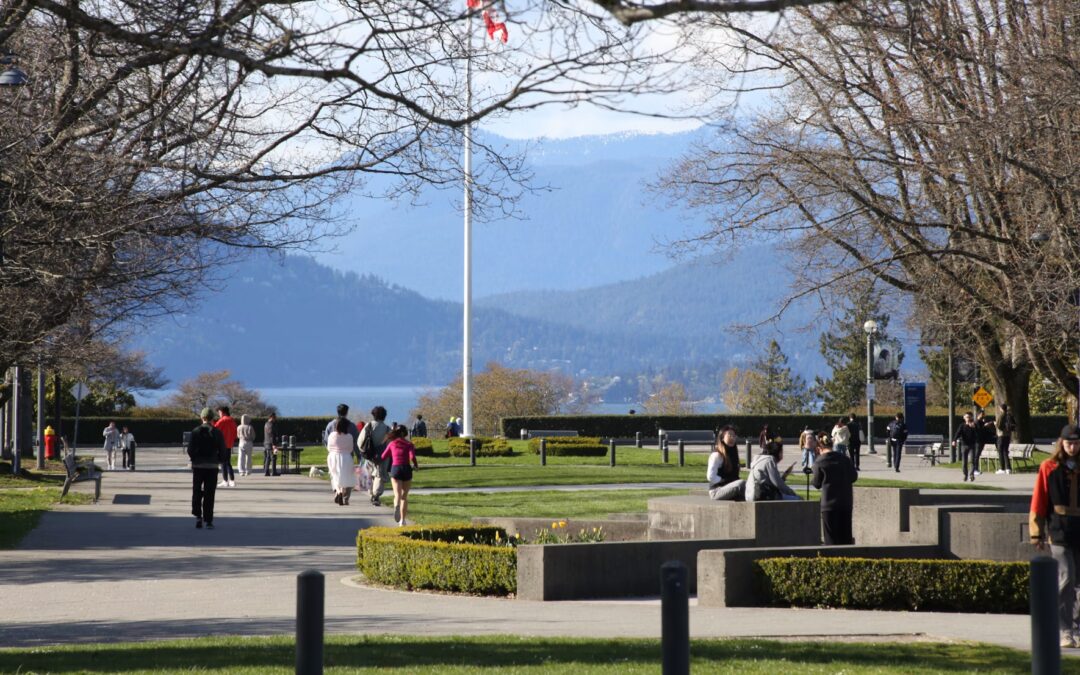April in Vancouver is a special kind of magic. The cherry blossoms are in full bloom, the days are noticeably longer, and there’s a tangible energy in the air—a sense of a world waking up. For many of us, it marks the true start of spring. But for the local ecosystem, April is more than just a beginning; it’s a critical, bustling crossroads.
This month, our coast and skies become a stage for some of nature’s most spectacular, and fleeting, performances. These are not everyday occurrences. These are unique events and visitors that grace us with their presence almost exclusively in April, turning our familiar parks and shorelines into world-class nature-watching destinations.
The Silver Wave and the Feast That Follows
One of the most profound events on the BC coast is the annual herring spawn. While the peak spawning often occurs in March, the ecological fallout creates an unmissable wildlife banquet that spills into April. Millions of tiny herring lay their eggs in shallow coastal waters, turning the ocean a milky turquoise. This sudden explosion of life is a dinner bell for thousands of animals.
In places like Stanley Park or along the shores of West Vancouver, you can witness the aftermath. Look for huge gatherings of seabirds, especially Surf Scoters and gulls, diving relentlessly. Look to the skies and the treetops for Bald Eagles, which congregate in incredible numbers to feast. Harbour seals and sea lions patrol the waters, their sleek heads popping up as they enjoy the easy meal. It’s a powerful reminder of how one small fish is the foundation for our entire coastal food web.
The Billion-Bird Layover
Vancouver is situated on the Pacific Flyway, a veritable superhighway for migratory birds. In April, this highway is experiencing rush hour. One of the most breathtaking spectacles is the arrival of hundreds of thousands of shorebirds, particularly the Western Sandpiper.
These tiny birds, weighing less than a golf ball, are on an epic journey from their wintering grounds in South and Central America to their breeding grounds in the Arctic. Our Fraser River Delta, especially at places like Boundary Bay, is one of their most critical rest stops. They descend in vast, shimmering flocks that move like a single organism, feasting on the nutrient-rich biofilm on the mudflats to refuel for the final leg of their incredible migration. Seeing a flock of 50,000 sandpipers take flight at once is a humbling, once-a-year phenomenon that happens right in our backyard.
How to Watch Respectfully
These April events are a privilege to witness, and it’s our responsibility to ensure our presence doesn’t cause harm or stress to the animals.
- Bring Binoculars: The best way to get a close-up view is from a distance. A good pair of binoculars or a camera with a zoom lens allows you to see incredible detail without disturbing the animals.
- Stay on the Trails: In sensitive areas like mudflats and shorelines, sticking to designated paths prevents the trampling of delicate habitats and food sources.
- Leash Your Pets: This is especially critical in shorebird habitats. A dog running free can cause an entire flock of thousands of birds to take flight, forcing them to burn precious energy they desperately need for their migration.
- Give Them Space: Whether it’s a seal on a rock or an eagle in a tree, maintain a respectful distance. If an animal changes its behaviour because of you, you are too close.
This April, as you head outside to enjoy the spring weather, take a moment to look a little closer. The world around you is putting on a show. By watching thoughtfully, we can appreciate these fleeting wonders and be reminded of the vibrant, wild world we are so lucky to be a part of.

